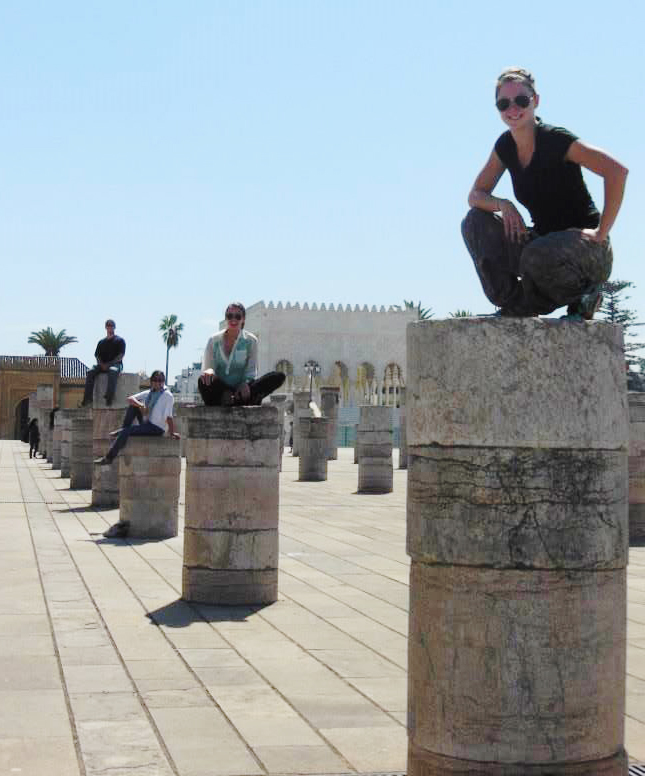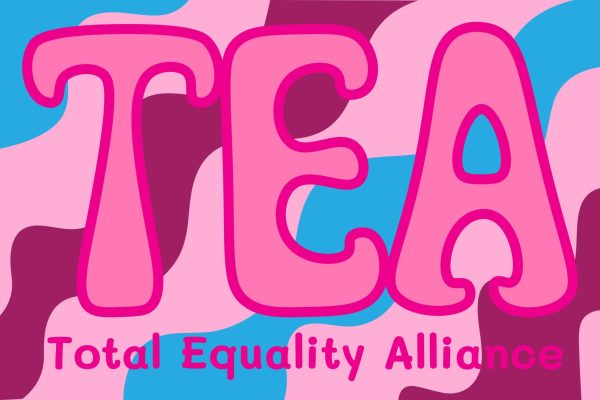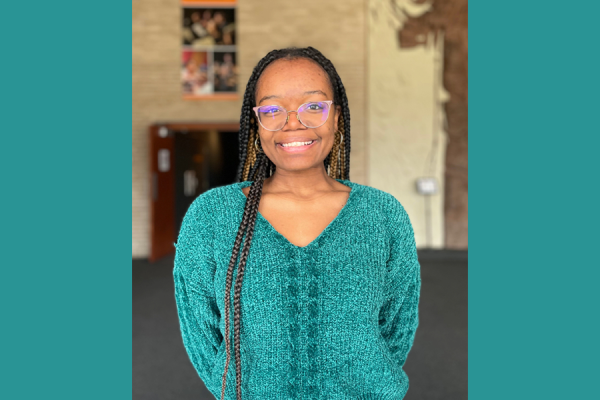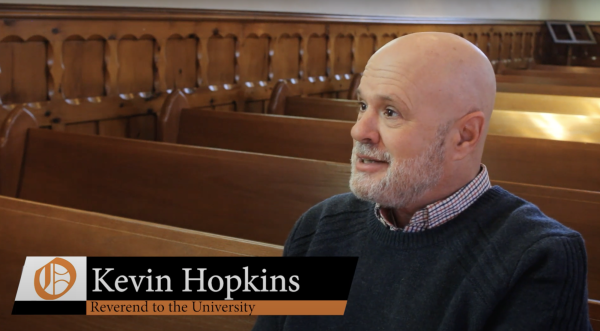Morocco Day 2: Rabat
Day 2: Rabat
A few notes about the house we were staying in:
Bezmah’s house was made up of five rooms: A kitchen, her father’s study, the television room, the computer room (where we were sleeping) and a small bedroom. These five rooms were positioned around an open courtyard-like area that did not have a roof over it. Thus, they didn’t keep anything in the center of this area but did have things piled up against the walls where there was an overhang. We were told this layout is typical of many homes in Morocco. There was also a bathroom but I don’t think it really qualified as a separate room.
Introducing the Turkish toilet.Open air courtyard area inside the house.
Before we got off the ferry Felicie explained that the majority of toilets in Morocco were not the kinds of toilets we were used to but were in fact Turkish toilets, a.k.a “squat toilets.” This means there’s more or less a hole in the ground for you to squat over and do your business. Additionally, most of these toilets didn’t have plumbing so it was up to you to fill up a bucket with water and pour it down the whole and use gravity to flush the waste away. While this took a little while to get the hang of, by the time we left Morocco I really came to rather like it.
The television and computer rooms in Bezmah’s house each had couches that did double duty as beds pushed up around the walls. Katie C., Amelia and I were given full reign of the computer room while the rest of Bezmah’s large family slept in the television room and bedroom. Similar to my experience with Moroccan eating habits, I came to be fond of this custom instead of disliking it for the lack of privacy it offered.
We woke up early that first morning so we could meet with our group to visit sites around Rabat. Before we left the house, though Bezmah, served us a breakfast of tea and some kind of delicious, warm bread. Bezmah walked us to the meeting point so we wouldn’t get lost and promised to meet us back there later when we would return for lunch.
Our first stop was an NGO in Salé, which is known as Rabat’s “bedroom community.” At the NGO we had another opportunity to meet with Moroccan students and discuss topics that interested us. This was one of my favorite parts of the trip.
I have been remiss not to mention up to this point that Islam is the constitutionally established religion in Morocco. The King of Morocco even claims his legitimacy as the descendant of the Islamic prophet Muhammad. Islam shapes the lives and culture of the vast majority of Moroccans, but not all. During this particular student discussion, there were two students who professed to be devout Muslims while the third openly called himself an atheist. I think this is what made our discussions so interesting.
For each topic we discussed — whether it was chemical weapons in Syria, government spending or homosexuality — we got opinions from both ends of the spectrum. It was incredibly interesting to hear an atheist’s view of Morocco as well as listen to facts about Islam. As Americans we have been constantly bombarded with negative and false information about Muslims for over a decade now. It was refreshing to finally be able to speak openly with people from an Islamic culture and get some facts straight. I know a big reason the Morocco Exchange program gave us so many opportunities to speak with Moroccans our age was to give us the chance to correct much of the false information about Islam.
Another thing that struck me about that discussion was how well informed each of the Moroccans were. They spoke with knowledge on most current events and of the intricacies of their government. I know for a fact most Americans can’t do that. I came away from that discussion with more knowledge and more respect for the Moroccan people and for Islam in general.
I could have continued that discussion all day, but Felicie pulled us away to visit Chellah, some Roman ruins in Rabat, and the Mausoleum of King Mohammed V, the current King’s grandfather. In between we took a short snack break while Felicie gave us some facts about each place. Something I truly appreciated about Felicie was she always carried a snack bag stocked full of cookies, dried fruit, nuts and chocolate. This tendency alone put her on my good side, especially since the Spaniards seem not to grasp the concept or necessity of snack time.
After the Mausoleum, where we took some pretty good pictures on some pillars to a long-unfinished mosque, we headed back to our houses for lunch. Bezmah again outdid herself with a delicious meal and more tea.
Shortly after we regrouped to explore Rabat’s Kasbah (old fort) with more Moroccan students or young professionals. I ended up in a group led by two petit but fiery Moroccan women with 3 other American’s from my program. We walked around the city for a bit, discussing things like sports, music and politics. One of the women wore a burka, a traditional Islamic headdress, but every other female our program had spoken with up to that point had not worn one. She told us it was simply a personal choice of hers, andthat Islam doesn’t require Muslims to wear it. I thought that was interesting and a common misconception that Americans have about Islam. We continued our discussions at a café before heading back to our houses to get ready for the evening’s activities, which involved going to a hammam, or public bath.
Most Moroccans go to the hammams about once or twice a week to get a good, clean scrub. Bezmah had been telling us the past two days how much we would enjoy the hammam but none of us were exactly sure what to expect. Katie C., Amelia and I gathered up a set of clean clothes, a towel and some soap and set off to meet the rest of the group. Thankfully, Felicie had arranged for a Moroccan woman, Sarah, who was about our age, to accompany us to the hammam and show us the ropes.
I think Sarah found our curiosity and slight nervousness at the thought of a public bath amusing but she kept any comments to herself. The bath was located right in the middle of a regular street lined with shops. We walked into the entry way, paid, and then proceeded upstairs to the bath. As soon as we walked into the bath area, a flood of hot steam hit us right in the face. It was so hot that none of us hesitated when Sarah commanded us to strip down to our underwear in the changing area.
Sarah then handed each of us a tube of green soap, a scrub and a shovel-like plastic object that looked like it belonged in a child’s sandbox. Then we walked down the hallway into the actual bath, which turned out to just be a large room with drains in the floor and low taps against the wall for filling up a bucket. Following in Sarah’s wake, we each grabbed a bucket and began filling it with water out of two taps: one scaldingly hot and another ice cold. There was an old lady working in there who tried to help some of us fill up our buckets because apparently we weren’t doing it correctly. I, however, preferred to fill my own up because her idea of a nice temperature for water that I would be pouring all over my body was considerably hotter than mine was.
Once everyone had a full bucket Sarah demonstrated how we simply sat down on the floor, took our shovels, poured water all over ourselves, scrubbed in the green soap and then rinsed it off. Apparently we all looked like we’d never cleaned ourselves before because she went into pretty good detail about how to wash and rinse.
Once we all got used to how hot it was in the bath, it was actually kind of nice. And as strange as it may sound, it was nice to be all in there together. I’ve definitely never been a fan of locker room showers but this experience was completely different. Everything I’d experienced in Morocco thus far exuded a sense of community and the hammam was no different.
After the hammam we returned to our houses for dinner. Bezmah wasn’t there yet so we sat and watched T.V. with her littlest sister, Zainab. Even though we couldn’t really speak to her, we used hand signals and had a blast dancing around the room to some song that came on the TV. Katie C. had also brought a container of bubbles with her and she gave it to our little host sister, who proceeded to spend about 10 minutes giggling profusely as she blew bubbles into all of our faces.
After that, Zainab apparently decided we were trustworthy because she pulled us over to the table, showed us some of her drawings and then offered her crayons and paper to us as well. Amelia was the only experienced drawer of the three of us but we each did our best to draw her a picture. When we had each completed one, Zainab promptly awarded us each a score of 100/100 and showed the drawings to all her siblings. This experience was further proof to me that you don’t need words to connect with someone.
When Bezmah came home, she made spaghetti for dinner with a sauce I was unfamiliar with but which was nevertheless, you guessed it, delicious. This was our last night staying with our host family so we all gathered around for a picture. Even Bezmah’s sister and cousin tore themselves away from their Facebook pages to join in.







